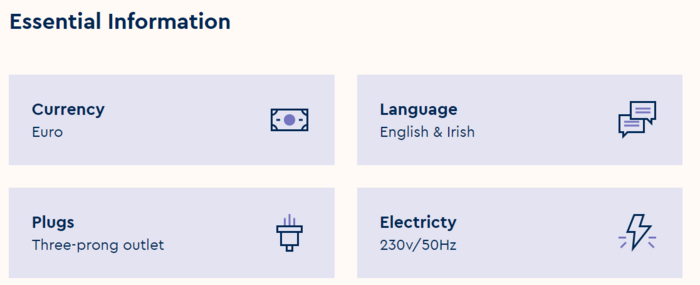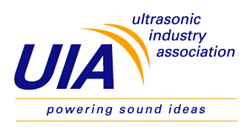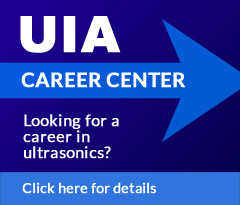UIA 52nd Annual Symposium
Program Schedule
Full Symposium Program Schedule
As our program is completed, you will find the schedule here. All times below are GMT
| |
Monday, 8 April 2024 |
| 8:55 am |
Opening Session for Medical Sessions Prof Margaret Lucas / Mark Hodnett, UIA President / Medical Session Chair |
| 9:00 am |
Additively manufactured ultrasonic osteotomy inserts for improved temperature, Dr Martin Hofmann, University of Bern |
| 9:30 am |
Ultrasound-enhanced fine-needle aspiration biopsy — from device development, Dr Heikke Nieminen, Aalto University |
| 10:00 am |
In vitro ultrasonic treatment of endothelial cells, Lisa Shriane, University of Birmingham |
| 10:30 am |
Refreshments and Networking |
| 11:00 am |
An accurate needle tip detecting method for ultrasound-guided regional anaesthesia at various driving voltages and insertion angles, Ashraf Agweder, University of Dundee |
| 11:30 am |
Practical design of a miniaturised half-wave ultrasonic transducer for soft-tissue dissection, Alexandr Kiyashko, Nami Surgical |
| 12:00 noon |
Ultrasonic Single-Sided Bone Tip for Neurosurgery, Daniel Cotter and James Sheehan, Integra LifeSciences |
| 12:30 pm |
Lunch |
| 1:30 pm |
Keynote: Designing ultrasound systems for brain research across different spatial scales, Dr. Mark Schafer, Drexel University |
| 2:30 pm |
Comparative study: Ultrasound imaging texture analysis vs. force and pressure, Ashraf Agweder, University of Dundee |
| 3:00 pm |
Neuromodulation, Dr Ali Rezai, West Virginia University |
| 3:30 pm |
Refreshments and Networking |
| 4:00 pm |
Using digital image correlation ultrasonically assisted orthogonal cutting, Dr. Dong Wang, University of Exeter |
| 4:30 pm |
Wireless. Wearable. Ultrasound, Dr. David Hughes, Novosound |
| 5:00 pm |
Conclusion of Medical Sessions |
| 5:30 pm |
Wine and Cheese Reception | Presentation of 2024 UIA Fellows |
| |
|
| |
Tuesday, 9 April 2024 |
| 9:00 am |
Networking |
| 10:00 am |
Developing ultrasonic transducers for novel intravascular surgical procedures, Liam Dillon, Ceramtec UK |
| 10:30 am |
UltraSurge: Surgery enabled by ultrasonics, Prof. Margaret Lucas, University of Glasgow |
| 11:00 am |
On the matter of acoustic softening, Dr. Karl Graff, Beechwood Ultrasonics, LLC |
| 13:30 |
UIA Annual Meeting |
| 11:30 pm |
Lunch, and Exhibitor + Poster Showcase |
| 1:30 pm |
Day 2 Concluding Remarks |
| 6:30 pm |
Depart for Evening Event at the Dublin Liberties Distillery - meet in lobby at 6:30 pm for a 5-minute walk |
| |
|
| |
Wednesday, 10 April 2024 |
| 8:55 am |
Opening Remarks: Dr Mahshid Hafezi / Dr Alex Hamilton,Industrial Session Chair |
| 9:00 am |
Material properties of hard piezoelectric ceramics at cryogenic temperatures, Dr Sebastian Schlack, PI Ceramic |
| 9:30 am |
Understanding the dynamics of Langevin transducers incorporating Nitinol, Yuchen Liu, University of Glasgow |
| 10:00 am |
Optimizing the Phase Window of Ultrasonic Transducers, Dr Dominick DeAngelis, Kulicke and Soffa Industries |
| 10:30 am |
Refreshments and Networking |
| 11:00 am |
Stereolithography for additively manufactured flexural ultrasonic transducers, Dr. Alex Hamilton, University of Glasgow |
| 11:30 am |
Piezoceramic tube transducers and flow-based sonoprocessing, Paul Daly, University of Glasgow |
| 12:00 noon |
|
| 12:30 pm |
Lunch |
| 1:30 pm |
Keynote: Ultrasonic delamination of technology critical metals from e-waste using catalytic etchants, Professor Andrew Abbott, University of Leicester |
| 2:30 pm |
Acoustic cavitation enhanced delamination of technology critical metals from printed circuit boards in a deep eutectic solvent, Dr. Ben Jacobson, University of Glasgow |
| 3:00 pm |
Selective bubble detection in a multi-phase flow, using non-linear acoustics, Hannes Emmerich, TU Dresden |
| 3:30 pm |
Refreshments and Networking |
| 4:00 pm |
|
| 4:30 pm |
Open Symposium Review Discussion |
| 5:00 pm |
UIA52 Concluding Remarks |
Posters
Miniaturised FUS transducer for automated robotic delivery, Jack Stevenson, University of Glasgow
Registration
Registration Fees
Live registration fees:
Members
$850
Nonmembers
$999
Students $495
Poster Presenters
$199 (includes Tuesday and your choice of either Monday or Wednesday at no additional charge
Daily registration - Members
$425
Daily registration - Nonmembers
$599
Virtual registration Fees:
Members $650
Nonmembers $850
Daily - members $299
Daily - nonmembers $499
Students Full - $495
Students Daily - $199
UIA is pleased to underwrite student participation as a full symposium participant OR as a poster presenter. Students submitting posters have the choice of adding either the Monday Industrial Sessions or the Wednesday Medical Sessions at no additional charge.
Featured Speakers
Featured Keynote Speakers
Medical Session Keynote Speaker
|

Mark E. Schafer, Ph.D. Fellow, ASA, AIUM, AIMBE
Sonic Tech, Inc.
|
Dr. Schafer has had an extensive leadership career in the medical device industry, with hands on development and program management experience from R&D through regulatory and commercialization. He is an internationally recognized expert in medical ultrasound, including design, development, intellectual property, regulatory, and applications. He has been a serial entrepreneur and is a named inventor on over 38 patents. He is a Fellow of the American Institute of Ultrasound in Medicine, the Acoustical Society of America, and the American Institute for Biological and Medical Engineering. After a thirty-five year career as an entrepreneur, consultant, and business leader, he was recently appointed Research Professor at the Drexel University School of Biomedical Engineering, Science, and Health Systems.
|
Foremost among his contributions is his work in ultrasound metrology, where he has pioneered measurement devices, techniques, and standards that assure the safety and efficacy of ultrasound imaging, therapeutic, and surgical systems. He was directly involved in establishing the domestic and international standards for ultrasound imaging systems, leading the industry’s efforts in conjunction with the FDA and leading clinical organizations. This work resulted in the regulatory framework that governs ultrasound imaging safety worldwide. Dr. Schafer also made key contributions to the international standards for both lithotripsy and ultrasound surgical systems. He is considered the leading authority on the acoustics of phacoemulsification and ultrasonic surgery, and has lectured worldwide on ultrasonic cutting. Recently, he assisted a startup company using ultrasound for neuro-stimulation, converting their laboratory curiosity into a viable clinical research system. This approach to neuro-stimulation is now becoming more widespread as a drug-free alternative to disorders such as anxiety and even coma. His current efforts at Drexel include NIH-funded research into cardiac output measurement using novel ultrasonic catheters, as well as miniature ultrasound sources for neuro-stimulation in fruit flies.
Designing ultrasound systems for brain research across different spatial scales
There has recently been a surge of interest in applying ultrasound to the brain as a direct or adjunctive therapeutic agent. Ultrasound energy is already being used in clinical pilot studies to treat such neurological issues as anxiety, depression and even coma, and to facilitate the uptake of drugs through the blood brain barrier. However, there are still fundamental questions regarding the nature of ultrasound interaction with neural tissues. A critical part of answering these questions is the development of ultrasound sources to meet unique exposure requirements. This talk describes the design of ultrasound exposure systems applicable to a wide range of experimental situations, from fruit flies (Drosophila melanogaster), through rodents, and to humans, representing six orders of magnitude in brain tissue volume. Each situation involves specific requirements of source size, frequency, exposure volume, output control, dosimetry and safety. First, the design details of a sub-millimeter 100kHz exposure source for stimulation of fruit fly neurons will be presented. Here, the primary challenge was creating a source that would fit into a 300μm aperture; the final design borrowed from both the ultrasound surgical and industrial domains. The source generated a uniform spherical sound field that could induce either exhibitory or inhibitory effects in the fruit fly. Moving up in scale, a 2MHz transducer was designed to expose select portions of a rodent brain, leaving nearby areas unexposed to serve as a control. Simulations of the ultrasound beam were conducted and confirmed by hydrophone measurements. Experiments demonstrated an increased uptake of exosomes within the brain, without the use of microbubbles. Finally, a system for clinical (human) use had completely different design requirements that emphasized magnetic resonance imaging (MRI) and optical guidance, as well as safety and the capability to conduct double blind studies. flexibility This design used 650kHz transducers, as a compromise between focusing strength and attenuation loss through the skull. The design included internal MRI and external optical tracking markers along with a comprehensive approach to exposure control. Clinical data show positive results for several neurological conditions, such as anxiety, coma, and essential tremor, with no patient safety issues. In summary, ultrasound transducer technology has the flexibility to encompass a wide range of experimental requirements, supporting new areas of research and discovery in brain science.
Industrial Session Keynote Speaker
|

Andrew Abbott,
Professor of Physical Chemistry, University of Leicester
|
Professor Abbott’s principal expertise is in green chemistry, where he established the field of deep eutectic solvents, now a significant discipline represented by thousands of research papers in the scientific literature. His specific research interests are in the processing of materials, and he has several significant collaborations with industry, including in the development of novel solvent systems for industrial applications such as metal deposition and dissolution. |
A significant proportion of his research to date has focused on the development of novel processes using ionic liquids, targeting delamination and processing of a wide range of materials and substrates, for example in recycling technologies for electronic waste. He is currently a partner in the Faraday Institution project ReLiB (Recycling and Reuse of EV Lithium-ion Batteries) with the University of Birmingham, where he has led his team to innovate a new process for delaminating battery materials which is being scaled up for use at battery manufacturing plants in the UK. Among many other projects, he also leads the SonoCat project in partnership with the University of Glasgow, focusing on the recovery of technology critical metals from electronic waste and photovoltaic cells using a combination of targeted ultrasonics with catalytic etchants. Professor Abbott holds eleven patents, and in recognition of his achievements, he was awarded the Royal Society of Chemistry Green Chemistry and Industrial Chemistry medals.
General Information
UIA52
8 - 10 April 2024
Hyatt Centric the Liberties, Dublin, Ireland
Based on our successful multi-access conference in 2023, we will be offering a virtual component so that participants from around the globe unable to travel to Ireland will still be able to participate.
Multi-access (and what this means)
The Symposium will accommodate both live and virtual participants. The schedule for the Symposium has been designed for easy viewing for both UK and European participants and those from North America. All presentations will be live streamed and participants will be able to answer questions and participate in unconference discussions.
To cover the production costs for the virtual platform the registration fee will be the same as the early registration for live participants.
UIA52 Code of Conduct
UIA is committed to providing a safe, productive, and welcoming environment for all meeting participants and staff. All participants are expected to abide by this Virtual Programs Code of Conduct.
UIA has zero-tolerance for any form of discrimination or harassment, including but not limited to sexual harassment by participants or our staff at our meetings.
Unacceptable Behavior is defined as:
- Harassment, intimidation, or discrimination in any form.
- Verbal abuse of any participant or UIA staff member.
- Examples of verbal abuse include, but are not limited to, verbal comments related to gender, sexual orientation, disability, physical appearance, body size, race, religion, national origin, inappropriate use of nudity and/or sexual images in public spaces or in presentations or threatening or stalking any participant.
Travel Info
Hyatt Centric The Liberties - our Symposium Headquarters
Located in The Liberties district of Dublin, close to disterillies, Guiness Brewery, and St. Patrick's Cathedral, our hotel offers room rates of €160 starting Sunday, April 7. Saturday rate is €185. You can use the link below to make your reservation from Saturday, April 6 through Thursday, April 11. If you want to stay longer, please contact the hotel reservations directly.
Click HERE to make your hotel reservation.
Getting to Dublin, Ireland
Getting to Dublin is a breeze. Dublin Airport is one of the busiest in Europe, with hundreds of daily flights providing a huge range of options to get here.
Direct flights are available from most major cities in the UK and continental Europe, several hubs in North America, and the Gulf cities of Dubai and Abu Dhabi. Connecting hubs hook up with further flights from all over the world, providing for easy access to the Irish capital.

Planning your trip to Dublin
Currently, you do NOT need a visa to visit Ireland (which is NOT a member of the EU) if you are a citizen of the USA, EU or the EEA (the EU plus Iceland, Norway and Lichtenstein) or Switzerland.
Visa free travel also applies to the following types of British nationality:
- British national (overseas)
- British overseas territories citizen (previously called ‘British dependent territories citizenship)
- British overseas citizen
Visa free travel does not apply to people who have a British passport as a ‘British protected person'.
If you have a short stay visa for the UK and are an Indian or Chinese citizen, you can travel to Ireland without a visa.
Check here to see if a visa is required if your citizenship is not listed above.
Whilst in Dublin
You won’t find leprechauns or pots of gold here, but you will discover that what it means to be Irish expands far beyond the borders of Ireland through the stories of Irish emigrants who became scientists, politicians, poets, artists and even outlaws all over the world. Discover Ireland from the outside in and find out why saying “I’m Irish” is one of the biggest conversation starters, no matter where you are.
Explore Trinity’s Old Library and view the world famous Book of Kells. Learn about the symbolism and artistry of the 1,200 year old manuscript and get a close-up look at the current pages on display. Listen to our free audio guide to hear from Trinity experts throughout your visit. Also visit the Long Library (a must for book lovers) and enjoy other fascinating programs. The link above will give you the most current information.
Tuesday Evening
Join us for our Tuesday evening event
Attention all ultrasonic manufacturers and researchers! Prepare your taste buds and get ready for a night of "spiritual" enlightenment at The Dublin Liberties! Join us for an unforgettable evening of Whiskey Tasting and Dinner that will leave you buzzing with excitement!
First, embark on a captivating tour of a whiskey distillery, where you'll uncover the secrets behind the golden elixir. From the mash to the maturation, you'll witness the alchemy that goes into crafting the perfect whiskey. Get ready to raise a glass and say, "Cheers!" as you sample a range of exquisite whiskeys, each with its own unique character and depth. Let your taste buds dance with joy as you savor the smooth and smoky flavors, perfectly balanced to tantalize your senses.
But wait, there's more! Indulge in a delectable grazing dinner that complements the whiskey perfectly. From savory bites to mouthwatering delights, each dish is carefully crafted to enhance your whiskey experience. It's a match made in culinary heaven!
As the evening unfolds, engage in lively and stimulating conversations with your colleagues and peers. Share your knowledge, exchange ideas, and let the whiskey fuel your creativity. Who knows, you might even stumble upon the next groundbreaking discovery over a glass of whiskey!
And to add an extra touch of enchantment, we've prepared special entertainment that will keep you entertained throughout the night. From live music to captivating performances, prepare to be mesmerized by the magic of the evening.
So, come join us for a fun and entertaining evening with your peers. Whether you're a whiskey aficionado or just curious to expand your palate, this event is sure to leave you with a lasting impression. Don't miss out on this "spirited" experience! Book your spot now and get ready to raise your glass to an unforgettable night at The Dublin Liberties!


